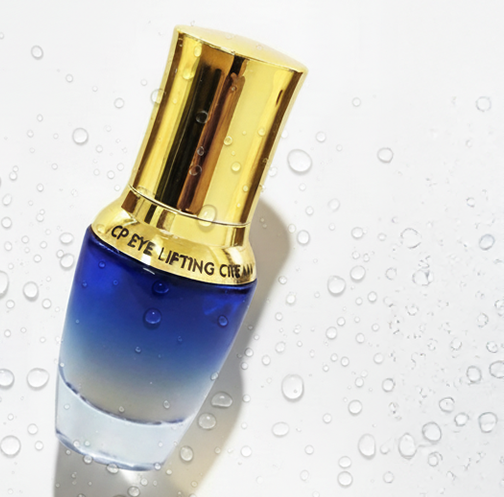Today we will refer to the issue of acne, which in recent years concerns more and more people of various ages and seems to have a decisive effect on the quality of life of each person.
What is acne?
Acne is a dermatological condition that appears, most often, in adolescence (but also in adulthood) and is characterized by inflammation of the sebaceous glands. Acne occurs when sebum begins to be secreted through the skin follicles. These follicles fill up with an oily mixture of dead skin cells and sebum, resulting in the skin pores to clog and causing pimples.
What causes acne?
There is no one and only answer to this question, because there are a lot and various factors which contribute to the appearance of acne. The main factors that contribute to the appearance of acne are intense oiliness of the skin, dead cells, clogged pores and bacteria.
When does acne appear?
Let us first mention that acne has no age. The most common period for acne appearance is during adolescence. However, it does not mean that it cannot appear earlier or later on. Thus, we have many different clinical forms of the skin disease:
1) Infant acne
Baby acne is a common harmless skin rash that appears in the first twenty-eight days of a newborn’s life and develops on its face or body. It usually occurs in 20% of newborns and is characterized as a temporary skin condition. Infant acne is generally not alarming, as it tends to go away on its own in just a few days.
2) Common acne (Acne vulgaris)
It is the most common form of acne and can appear to anyone regardless of age, gender or ethnicity. However, it occurs more often to teenagers and disappears by the age of 25.
3) Post-adolescent acne
In recent years, post-adolescent acne has become more and more common, which mainly affects women that are going through their third or fourth decade of their life. It is mainly detected on the chin and the jaw and usually recedes towards the end of the fourth decade.
Which are the main types of acne?
1) Comedonal acne
It is characterized by the presence of either open blackheads which are black spots composed of sebum, keratin, hair section and remnants of sebaceous glands, or closed blackheads which are small white keratin spots.
2) Papulopustular acne
This type of acne is moderate and there is a little inflammation in the skin, indicating an outbreak of the infection. It is manifested by the appearance of papules (small red pimples) or pustules (pimples with pus) on the face, chest, shoulders, thighs and back.
3) Bladder nodular acne
It is similar to the papulopustular acne, only this form manifests with more papules and internal pimples under the skin which cause pain. If not treated early, it can lead to cystic acne.
4) Cystic acne
It is the hardest and most painful form of acne during which nodules and cysts are being developed. This type of acne can create severe marks on the face if not treated early on, that’s why it needs immediate treatment from a professional.
5) Rosacea acne
Rosacea acne is also known as adult acne. It is a chronic inflammatory skin disease of the face which manifests mainly with severe redness, pimples, varicose veins, hypersensitivity and edema.
Why since I’m taking care of my skin I still get pimples?
The answer is multifaceted. Every acne case is different. Acne can last for a lot of years if not treated early on and evolves with ups and downs. The most important thing is to follow a care routine with the appropriate products in order to improve the condition and limit flare ups!
How fast will acne disappear using your products?
It is one of the most common questions we receive. First of all it does not have a fixed duration and if not treated early on, acne can persist for a lot of years. As already mentioned above, not all acne’s causes are known. What is certain is that it is a multifactorial matter that requires us to form a specific care routine which needs patience and persistence. Below we will mention factors that contribute to or worsen acne.
Adolescence: Youthful acne also known as teenage acne is the most common type of acne which is usually due to changes in hormonal levels, mainly androgens and it is common in both girls and boys. It usually appears from the age of 12 and it can last up until the age of 25. It is important to mention that it doesn’t mean that youthful acne will last for so many years. It depends on the beginning of adolescence.
Hormonal Factors: The term hormonal acne refers more specifically to adult female acne and mainly to hormonal changes which occur during the menstrual cycle. The imbalance of female hormones is the most frequent appearance reason of this skin disease. Hormonal fluctuations are associated with menstruation, pregnancy, menopause, polycystic ovary syndrome and increased androgen levels.
Cosmetics: Cosmetics use and especially those that contain food-borne ingredients, can easily activate acne. It is also good to avoid products that contain petroleum jell, lanolin or other chemicals. When we are going through acne it is preferable to avoid makeup and leave our skin to breathe.
Incorrect aesthetic care: An incorrect beauty routine can be destructive to our skin. One of the most frequent mistakes we make is to use wrong products. Care products must match with our skin type.
Stress: Stress leads to cortisol secretion, a hormone that affects neuropeptides and cytokines that control sebum production in the skin. Therefore, the more stress, the more cortisol, the more sebum.
Use of medication: Chronic drug use can lead to acne. Some drugs like cortisone, contraceptives or even antidepressants cause exacerbation.
Eating Habits: Food rich in fat such as chocolate, chips, sweets, fast food and alcohol have been blamed for the appearance of acne.
Smoking: According to scientific research, smoking not only causes premature aging of the skin, but it can also worsen acne marks. For example, nicotine can gradually exhaust the ability to store vitamin C, a very important vitamin for the skin’s health. Also smoking has been blamed for hormonal disturbances which lead to severe acne breakouts.
Environmental and climatic conditions: Environmental factors such as air pollution, humidity, solar radiation and switching from a hot to a dry environment are proven to negatively affect our skin, while at the same time making acne-pro skins’ situation difficult.
Pathological condition: Excessive androgen secretion, congenital adrenal hyperplasia, hypothyroidism and hyperprolactinemia are pathological conditions that, according to scientists, are related to acne.
Family history (heredity): Also, heredity is an important factor in the appearance of acne. Hereditary predisposition to rosacea acne, for example, has been hypothesized to be based on family inheritance.
To sum up, acne is a chronic matter that is not only a characteristic of adolescence as many think. If despite all efforts acne persists, we would suggest you continue with a stable pace the care routine you are already following, but it would be good to research the possible reason hiding behind it. A visit to a gynecologist or endocrinologist for the necessary tests is necessary.
It should be noted that the way of life, diet and exercise have a decisive influence on our health and therefore on our skin. A visit to the nutritionist and the adoption of a proper nutritional plan will only do us good if we suffer from unwanted pimples.
Finally, we should not forget that our outward appearance should not be more important than our inner beauty. Because beauty that comes from within can have a positive impact in the way we feel but also in the way we experience different situations in general.
With Love,
CP Herbalist team








